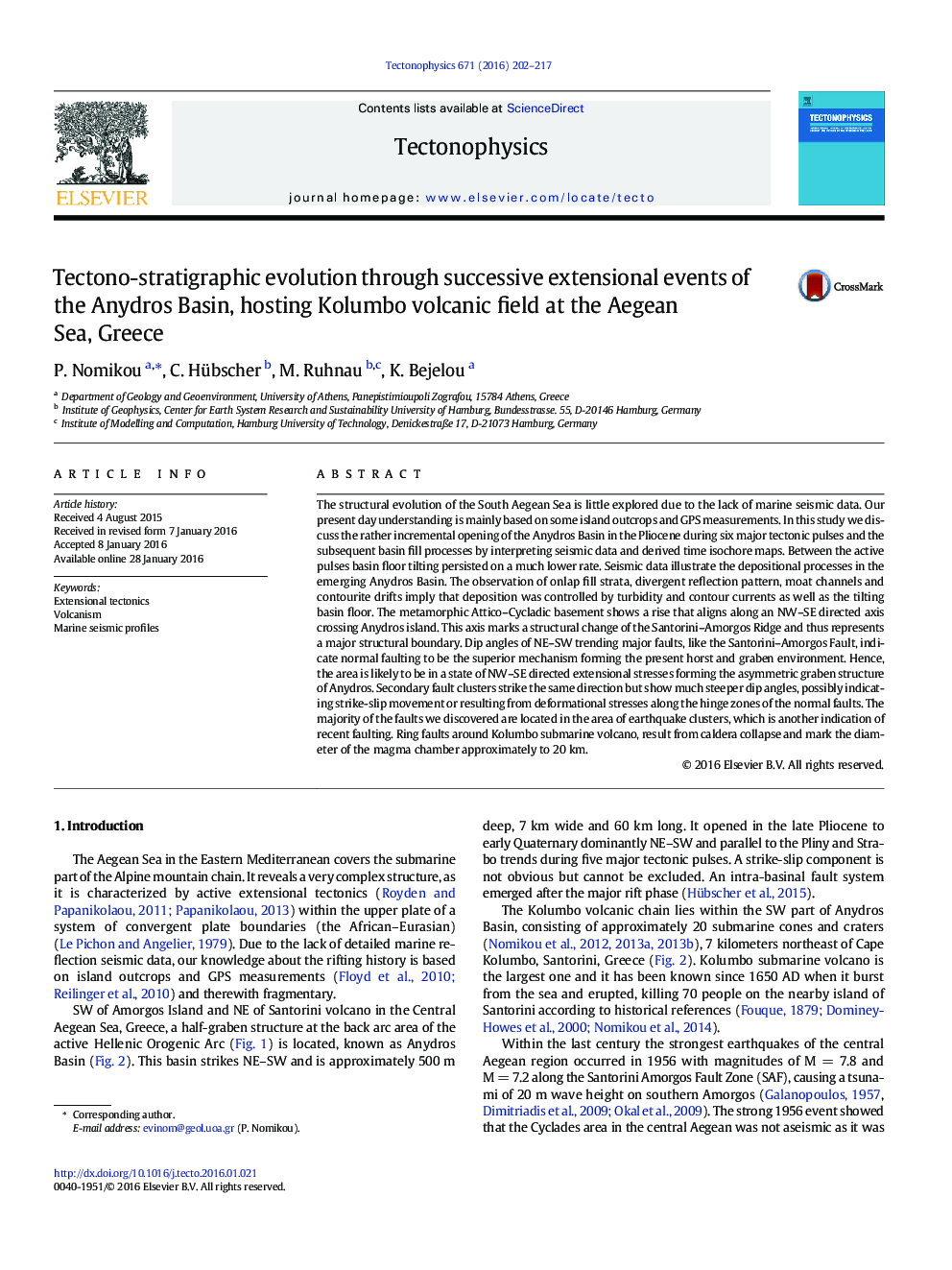| کد مقاله | کد نشریه | سال انتشار | مقاله انگلیسی | نسخه تمام متن |
|---|---|---|---|---|
| 4691334 | 1636725 | 2016 | 16 صفحه PDF | دانلود رایگان |

• NE-SW rifting occurred during six tectonic pulses, parallel to the eastern part of the Hellenic trenches with NW-SE extension
• Ring faults around Kolumbo submarine volcano emerged during its last eruptive phase
• Multi-channel seismic data which resolve the entire basin fill deposits down to the metamorphic basement
The structural evolution of the South Aegean Sea is little explored due to the lack of marine seismic data. Our present day understanding is mainly based on some island outcrops and GPS measurements. In this study we discuss the rather incremental opening of the Anydros Basin in the Pliocene during six major tectonic pulses and the subsequent basin fill processes by interpreting seismic data and derived time isochore maps. Between the active pulses basin floor tilting persisted on a much lower rate. Seismic data illustrate the depositional processes in the emerging Anydros Basin. The observation of onlap fill strata, divergent reflection pattern, moat channels and contourite drifts imply that deposition was controlled by turbidity and contour currents as well as the tilting basin floor. The metamorphic Attico–Cycladic basement shows a rise that aligns along an NW–SE directed axis crossing Anydros island. This axis marks a structural change of the Santorini–Amorgos Ridge and thus represents a major structural boundary. Dip angles of NE–SW trending major faults, like the Santorini–Amorgos Fault, indicate normal faulting to be the superior mechanism forming the present horst and graben environment. Hence, the area is likely to be in a state of NW–SE directed extensional stresses forming the asymmetric graben structure of Anydros. Secondary fault clusters strike the same direction but show much steeper dip angles, possibly indicating strike-slip movement or resulting from deformational stresses along the hinge zones of the normal faults. The majority of the faults we discovered are located in the area of earthquake clusters, which is another indication of recent faulting. Ring faults around Kolumbo submarine volcano, result from caldera collapse and mark the diameter of the magma chamber approximately to 20 km.
Journal: Tectonophysics - Volume 671, 7 March 2016, Pages 202–217